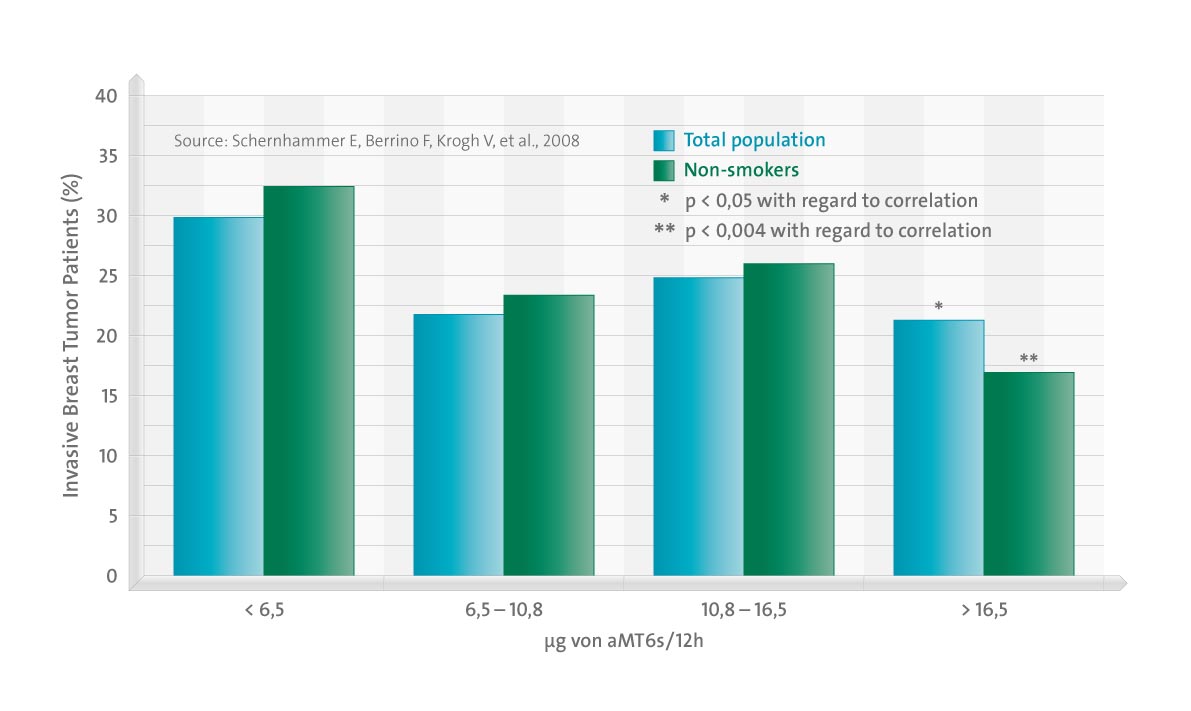Background
Low urinary melatonin levels have been associated with an increased risk of breast cancer in premenopausal women. However, the association between melatonin levels and breast cancer risk in postmenopausal women remains unclear.
Methods
We investigated the association between melatonin levels and breast cancer risk in postmenopausal women in a prospective case-control study nested in the Hormones and Diet in the Etiology of Breast Cancer Risk cohort, which included 3966 eligible postmenopausal women. The concentration of melatonin’s major metabolite, 6-sulfatoxymelatonin, was measured in a baseline 12-hour overnight urine sample from 178 women who later developed incident breast cancer and from 710 matched control subjects. We used multivariable-adjusted conditional logistic regression models to investigate associations. Relative risks are reported as odds ratios (ORs). All statistical tests were two-sided.
Results
Increased melatonin levels were associated with a statistically significantly lower risk of invasive breast cancer in postmenopausal women (for women in the highest quartile of total overnight 6-sulfatoxymelatonin output vs the lowest quartile, multivariable OR also adjusted for testosterone = 0.56, 95% confidence interval [CI] = 0.33 to 0.97; P(trend) = .02). This association was strongest among never and past smokers (OR = 0.38, 95% CI = 0.20 to 0.74; P(trend) = .001) and after excluding women who were diagnosed with invasive breast cancer within 4 years after urine collection (OR = 0.34, 95% CI = 0.15 to 0.75; P(trend) = .002). We did not observe substantial variation in relative risks by hormone receptor status of breast tumors. Among the 3966 women in the cohort, 40 of the 992 women in the highest quartile of 6-sulfatoxymelatonin developed breast cancer during follow-up, compared with 56 of the 992 women in the lowest quartile of 6-sulfatoxymelatonin.
Conclusion
Results from this prospective study provide evidence for a statistically significant inverse association between melatonin levels, as measured in overnight morning urine, and invasive breast cancer risk in postmenopausal women.
